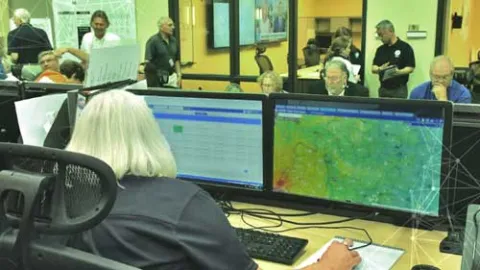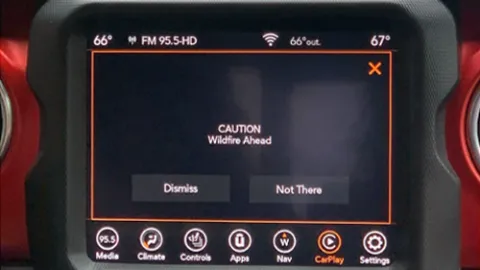
The Science and Technology Directorate (S&T) is focused on building a more resilient and responsive public safety ecosystem. Our research, development, testing and evaluation activities in the domain of public safety communications are essential for creating a robust, interconnected, and secure emergency response communication infrastructure.
Effective communication is a cornerstone of emergency response, and S&T is dedicated to ensuring that first responders have access to reliable, interoperable, and resilient communication systems. S&T's efforts in this domain are highly collaborative, involving partnerships with federal, state, local, and tribal agencies, as well as private sector and academic institutions. By focusing on the unique communication needs of first responders and leveraging innovative technologies, S&T significantly enhances the effectiveness and efficiency of emergency response operations. This commitment to advancing public safety communications helps build more resilient communities and ensures that first responders are better equipped to manage crises and save lives.
Our work focuses on:
- Interoperability and Compatibility
- Reliability and Resilience
- Advanced Communication Tools
- Data Integration and Analytics
- Next-Generation 911 (NG911)
- Training and Simulation
- Community Engagement and Alert Systems
Listen
News
- Feature Article: Channeling NEXTGEN TV so Responders Can Answer the Call
- News Release: DHS Releases Recommendations to Protect National Public Warning System from EMPs
- News Release: DHS S&T Funds Critical Interoperable Messaging Capability for First Responders
Resources
Resources from concluded programs are available for reference.
- Alerts and Warnings Using Social Media Project Fact Sheet and Video
- Broadband Demonstration Network—Developing Tools to Measure and Assess In-Building Coverage Fact Sheet
- Canada-U.S. Enhanced Resiliency Experiment (CAUSE) Fact Sheet
- Canada-U.S. Enhanced Resilience Experiment Series (CAUSE) V Fact Sheet
- Chicago Long Term Evolution (LTE) Fact Sheet
- Cycle of Warning:
- Datacasting—Broadcasting Real-Time Video and Critical Data over Existing Digital Television Spectrum Fact Sheet and Video
- Digital Volunteer Program Guide Facts Fact Sheet
- Incident Management Information Sharing (IMIS) Capability Maturity Model (CMM) Fact Sheet
- Machine-to-Machine Architectures to Improve First Responder Communications Fact Sheet
- Mission Critical Voice Intelligibility over Long Term Evolution (LTE) Fact Sheet
- Mobility Acceleration Coalition Fact Sheet
- NATO/Next Generation Incident Command System (NICS) Pilot Project Fact Sheet
- Social Media Guidance Planning
- Social Media Working Group (SMWG) for Emergency Services and Disaster Management
- Social Media Working Group for Emergency Services and Disaster Management Fact Sheet
- Text-to-911 Translation Fact Sheet
- Voice Intelligibility Testing Over Long Term Evolution Objective Speech Quality Estimates for Project 25/Voice over Long Term Evolution (P25/VoLTE) Interconnections Report
- Wildland Urban Interface (WUI) Fire Operational Requirements and Capability Analysis: Report of Findings
- Wireless Emergency Alerts (WEA) Fact Sheet and Videos


